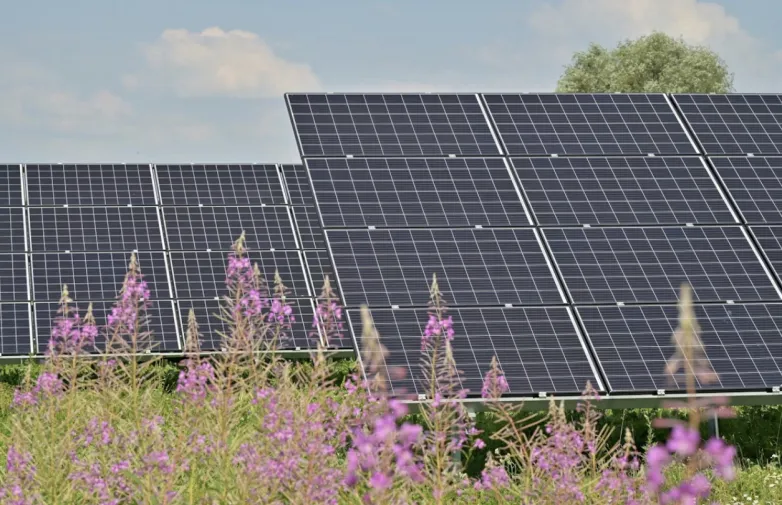How Next-Gen Materials Are Reshaping the Future of Solar Energy

Innovative materials are revolutionizing solar energy by enhancing the durability and efficiency of solar panels. These advancements are crucial for adapting to environmental challenges and maximizing energy output.
The future of solar energy is being transformed by next-generation materials that promise to reshape how solar panels are designed and utilized. As the demand for sustainable energy solutions grows, the focus has shifted towards materials that not only improve the longevity of solar panels but also enhance their performance in diverse environmental conditions. This shift is driven by the need to overcome challenges such as extreme weather and mechanical stress, which have traditionally limited the lifespan and efficiency of solar panels. The integration of advanced materials, including perovskite solar cell technology, is at the forefront of this transformation.
Challenges in Solar Energy and the Role of Advanced Materials
Solar panels are subject to numerous challenges that can hinder their performance and lifespan. Environmental factors such as UV radiation, temperature fluctuations, and mechanical wear contribute to the gradual degradation of panels. These issues necessitate the development of materials that can withstand such stresses and maintain high energy output levels. Next-gen materials are being engineered to address these challenges, offering enhanced durability and efficiency.
One of the most significant advancements is the development of materials that resist environmental degradation while maintaining optimal performance. For example, innovative coatings and substrates are being designed to protect panels from harsh weather conditions and mechanical wear. These materials are crucial for ensuring that solar panels can operate efficiently over extended periods, thereby maximizing their return on investment.
Recent developments in nanotechnology have introduced promising solutions to these challenges. Nanostructured materials can enhance light absorption and improve electron transport within solar cells, leading to higher conversion efficiencies. These materials also demonstrate superior resistance to thermal cycling and mechanical stress, addressing key durability concerns. The incorporation of nano-scale modifications to traditional materials has shown potential to increase panel efficiency by up to 25% in laboratory settings, while simultaneously extending their operational lifespan.
The integration of smart materials that can adapt to changing environmental conditions represents another breakthrough in addressing these challenges. These materials can automatically adjust their properties based on external factors such as temperature and light intensity, optimizing energy capture throughout the day. For instance, thermochromic materials can modify their transparency in response to heat, helping to regulate panel temperature and maintain optimal operating conditions. This adaptive capability not only enhances efficiency but also contributes to the overall durability of the solar installation.
Innovations in Material Science for Solar Panels
Emerging materials are playing a pivotal role in reshaping solar energy. These materials offer superior light absorption and adaptability compared to traditional silicon-based cells. Their integration into solar panels allows for the creation of thinner, lighter, and more flexible panels that can be used in a variety of settings, from residential rooftops to large-scale solar farms.
Research into hybrid materials is also yielding promising results. By combining different materials, researchers aim to create solar panels that leverage the strengths of each component. For instance, integrating carbon-based materials with traditional silicon has been shown to improve thermal stability and resistance to environmental stress, as evidenced by studies conducted in solar farms located in challenging climates.
Strategies for Enhancing Solar Panel Longevity
In addition to material innovations, several strategies are being explored to extend the lifespan of solar panels. Advanced coatings that protect against environmental damage while maintaining transparency and efficiency are one such approach. These coatings help prevent degradation and ensure consistent energy output.
Self-cleaning technologies are another area of focus, aiming to reduce maintenance costs by preventing dirt accumulation on panel surfaces. This innovation could significantly extend the operational life of solar panels by minimizing the need for manual cleaning.
Moreover, smart monitoring systems are being integrated into solar panels to provide real-time data on performance and degradation. These systems enable proactive maintenance, allowing issues to be addressed before they impact efficiency. A case study from a solar farm in Arizona demonstrated increased energy output due to timely interventions facilitated by such monitoring technologies.
Also read
- How to Reduce Downtime in Solar Operations?
- Hyperparameter Tuning Good Practices for Robust Predictive Models
- 5 Critical Metal Forming Processes in Solar Panel Manufacturing
- Maximizing Efficiency with Low-Maintenance Solar Panel Systems
- Cyber Hygiene for Solar Companies: Protecting Your Data from Email Threats


